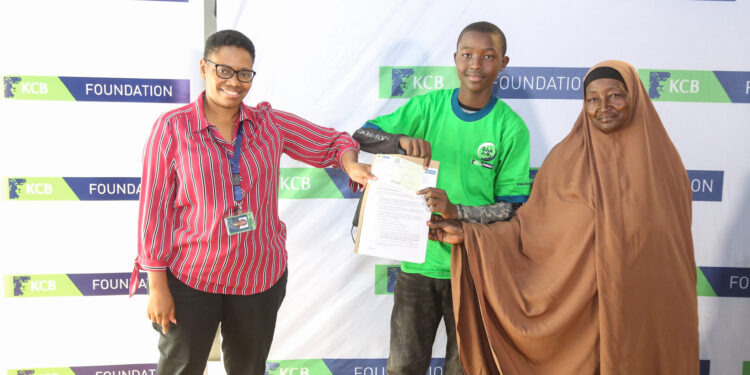Share this
KCB Foundation is calling for applications for the high school scholars programme for the class of 2022. This year, the Foundation has scaled the programme by putting in KES 252M to support 1,000 bright underprivileged learners from across the country up from 240 students.
The increase in the number of beneficiaries is in line with KCB Foundation’s expansion of the entire scholars programme, which now includes an apprenticeship element as well as university and tertiary education scholarships.
The program intends to actively and intentionally support marginalized, underserved, minorities and vulnerable students to access education from all 47 counties.
Speaking on the programme, KCB Group Director, Marketing, Corporate Affairs and Citizenship; Rosalind Gichuru said that the increase in capacity has been informed by the long-lasting effects that the Covid-19 pandemic has had on various households, both economically and socially.
The adverse impact of the pandemic has placed financial strain on households and widened the poverty gap, affecting access to education for many young Kenyans, Rosalind said.
“As such, we increased the scholarship capacity to ensure that more of these bright students have a chance to continue their education and change their future. The revamp also means we be able to support their transition from high school to institutions of higher learning, both university and TVETs” she said.
The window for the application is open until Monday, 11th April 2022.
The KCB Foundation scholarship is comprehensive, covering fees for all four years, catering for personal effects, learning materials, school uniforms, transport to and from school, termly school-based mentorship sessions with a KCB staff and an annual group mentorship and networking with fellow scholars.
The 2022 class will form the fifteenth cohort of the scholar’s programme, with 1,320 students currently in school, bringing the total number of beneficiaries to 3,535 since its inception in 2007.
Ultimately, the scholars programme aims to increase the transition rate from primary to secondary schools and aid in the attainment of every one of the 17 sustainable development goals.





